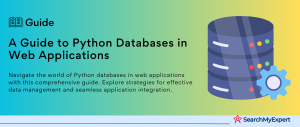Understanding RESTful APIs and the Advantages of Python for API Development
In today’s digital world, RESTful APIs have become a cornerstone of web development, enabling seamless communication between different software applications over the internet. REST, which stands for Representational State Transfer, is an architectural style that defines a set of constraints to be used for creating web services. These APIs allow for interaction with web services in a straightforward and stateless manner, making them highly scalable and easy to use.
What is a RESTful API?
A RESTful API leverages HTTP protocols to perform CRUD (Create, Read, Update, Delete) operations on data. It operates on the principle of making network communication as efficient and standard as possible. The core architectural principles of REST involve:
- HTTP Verbs: These are methods such as GET, POST, PUT, and DELETE, each facilitating specific types of operations on resources. For example, GET is used to retrieve data, POST to create new resources, PUT to update existing ones, and DELETE to remove them.
- Resource Representation: This principle refers to the presentation of data in a particular format, with JSON (JavaScript Object Notation) and XML (eXtensible Markup Language) being the most common. These formats ensure that data can be easily exchanged and understood by different systems.
- Statelessness:
Every API request from a client to the server must contain all the information the server needs to understand and complete the request. The server does not store any client session information, making each request independent of others.
RESTful APIs are widely used for web services and applications due to their simplicity, reliability, and scalability. They support a variety of use cases, from social media platforms sharing data across billions of users to cloud-based services that require integration with various other services and applications.
Why Python for RESTful APIs?
Python stands out as a premier language for developing RESTful APIs for several compelling reasons:
- Conciseness and Readability: Python’s syntax is clear and concise, making it easier for developers to write and maintain code. This readability significantly speeds up the development process, as developers can quickly understand and modify code written by others.
- Rich Ecosystem of Libraries:
Python boasts a rich ecosystem of libraries and frameworks, such as Flask and Django, which are specifically designed to facilitate the rapid development of web applications and RESTful APIs. These tools provide ready-made solutions for common tasks, further accelerating development. - Suitability for Rapid Development:
The combination of Python’s simplicity, its powerful libraries, and its dynamic typing system makes it exceptionally suited for rapid development. Developers can prototype and deploy web applications and APIs much faster with Python than with many other programming languages. - Versatility and Scalability: Python’s versatility makes it suitable for developing a wide range of applications, from simple web services to complex, data-intensive applications. Its scalability ensures that applications can grow in complexity and user base without significant rewrites or changes to the underlying architecture.
Setting Up the Development Environment for Python API Development
Embarking on the journey of developing RESTful APIs with Python begins with setting up a robust development environment. This setup is crucial for creating an efficient and streamlined workflow that can accommodate the complexities of API development. Here, we’ll explore the essential tools, including Integrated Development Environments (IDEs), virtual environments, and Python version management, followed by an introduction to key libraries necessary for building and consuming APIs.
Integrated Development Environments (IDEs)
Choosing the right IDE is pivotal for enhancing productivity and facilitating code management. IDEs offer an array of features such as syntax highlighting, code completion, and debugging tools, making the development process more intuitive and efficient. Some of the most recommended IDEs for Python development include:
- PyCharm:
Offers a rich set of features tailored for Python development, including excellent support for web development frameworks, database integration, and virtual environments. - Visual Studio Code (VSCode):
A lightweight, extensible IDE that supports Python through extensions. VSCode is renowned for its fast performance, git integration, and support for development in containers and remote environments. - Jupyter Notebook: Ideal for exploratory programming and data analysis, Jupyter Notebooks support live code, equations, visualizations, and narrative text.
Virtual Environments and Python Version Management
To manage dependencies and ensure consistency across development, staging, and production environments, the use of virtual environments is recommended. Virtualenv and conda are two popular tools that allow you to create isolated Python environments, each with its own set of libraries and Python versions. This isolation prevents dependency conflicts and makes it easier to manage project-specific requirements.
For managing multiple Python versions, pyenv is an invaluable tool. It enables developers to switch between versions seamlessly, catering to projects that may require a specific Python version.
Installing Essential Libraries
With the development environment set up, the next step is to install the libraries that will empower your API development. Python’s rich ecosystem includes several frameworks and libraries designed to streamline the creation of RESTful APIs:
- Flask: A lightweight framework that is easy to get started with for small to medium-sized applications. It is highly customizable and supports extensions that can add application features as if they were implemented in Flask itself.
- Django:
A
high-level framework that encourages rapid development and clean, pragmatic design. It comes with an ORM (Object-Relational Mapping), authentication, and other high-level features. Django REST Framework is an additional toolkit built on top of Django, specifically designed for
building APIs. - FastAPI:
A modern, fast (high-performance) web framework for building APIs with Python 3.6+ based on standard Python type hints. It’s gaining popularity for its speed and ease of use for creating RESTful APIs. - Requests:
While Flask, Django, and FastAPI are geared towards building APIs, the Requests library is indispensable for consuming external APIs. It is a simple, yet powerful HTTP library used for making HTTP requests to integrate with web services.
Mastering RESTful API Design Principles
Designing RESTful APIs involves more than just coding; it requires a deep understanding of web standards and best practices to ensure APIs are scalable, maintainable, and intuitive for developers to use. At the heart of RESTful API design lie principles that dictate how resources are identified, how client-server interactions are structured, and how data is formatted for exchange. This section delves into these core principles, providing a foundation for creating well-structured and effective APIs.
Resource Identification and URL Structure
In RESTful design, resources are the fundamental concepts that are manipulated through API calls. A resource can be anything that the API interacts with, such as a user, a product, or a service. The key to effective RESTful design is clear and logical resource identification through URLs.
- URL Structure: URLs, or Uniform Resource Locators, serve as the address for accessing resources. A well-designed API URL structure should reflect the hierarchy and relationships between resources, making it intuitive for developers to understand how to interact with the API. For example, accessing a specific product might be structured as GET /products/{productId}, where {productId} is a placeholder for the product’s unique identifier.
- Resource Naming Conventions:
Use plural nouns to represent resources (e.g., /users, /products) to imply that the API endpoint is dealing with collections of items. This convention aids in creating predictable URLs. For actions that don’t neatly fit into the CRUD model, consider using sub-resources or query parameters to handle complex operations while maintaining a clear URL structure.
HTTP Verbs and Operations
RESTful APIs leverage HTTP methods (also known as verbs) to perform CRUD operations on resources. These methods provide a uniform interface for interacting with resources, with each method having a specific, well-defined semantic meaning:
- GET:
Retrieve a representation of a resource or a list of resources. GET requests should be idempotent, meaning that making multiple identical requests should have the same effect as a
single request. - POST:
Create a new resource. POST requests typically include the body of the request containing the data of the resource to be created. - PUT:
Update an existing resource in its entirety. PUT requests should also include the complete representation of the resource being updated. - DELETE:
Remove a resource. A successful DELETE request often returns an HTTP 204 (No Content) status code, indicating that the action was successfully processed but there is no content to send in the response. - PATCH: Partially update an existing resource. Unlike PUT, which requires sending the complete resource, PATCH requests only need the changes to the resource.
Data Serialization and Deserialization
Data serialization is the process of converting data structures or object states into a format that can be stored or transmitted and subsequently reconstructed. In the context of RESTful APIs, serialization and deserialization are crucial for data exchange between the API and its clients.
- JSON (JavaScript Object Notation):
JSON is the most common format for data exchange in RESTful APIs due to its lightweight nature and easy readability for humans and machines alike. JSON represents data as key-value pairs, making it an ideal choice for most web applications. - YAML (YAML Ain’t Markup Language):
YAML is another serialization format that is often used for configuration files but can also be used for data exchange. Its syntax is more readable than JSON, which can be advantageous in settings where configuration files are frequently accessed by humans.
Building Your First Python RESTful API
Creating a RESTful API with Python is a rewarding project that not only enhances your backend development skills but also deepens your understanding of web protocols and application design. Python offers a variety of frameworks to streamline this process, each with its unique capabilities and advantages. In this guide, we will discuss the steps to build your first API, focusing on framework selection, endpoint creation, and robust error handling.
Choose a Framework
Flask
Flask is a micro-framework that is particularly favored for its simplicity and flexibility. It allows developers to start small but easily scale up to complex applications. Flask’s minimalistic approach does not include an ORM or form validation tools out of the box, which means you have more control over the components and libraries you want to use. This makes Flask ideal for developers who prefer to assemble their tools or work on smaller projects where a full-fledged framework is not necessary.
Django
Django, on the other hand, is a high-level framework that follows the “batteries-included” approach. It provides an ORM, authentication, template engine, and many other features right out of the box. This can significantly speed up development time for complex, data-driven websites. Django is particularly well-suited for projects that require a robust database backend and have complex security needs, like user authentication and permissions.
Create Endpoints and Handlers
Creating endpoints in your chosen framework involves defining the routes that your API will expose to clients and the logic that will process requests and return responses. A well-designed API will have endpoints that clearly correspond to specific operations on resources.
- Resource Naming: Use clear, descriptive paths that intuitively indicate what resources they operate on. For instance, /users for accessing user information and /orders for order data.
- HTTP Verbs:
Employ the appropriate HTTP methods (GET, POST, PUT, DELETE) to perform CRUD operations. This aligns with REST principles, making your API predictable and easy to use.
Error Handling and Validation
Robust error handling and validation are critical to the reliability and security of your API. Properly implemented, they ensure that your API gracefully handles invalid requests, missing data, and server errors, providing meaningful feedback to the client.
- Validation:
Check that the data submitted in requests is of the correct form and meets all your business rules. This could include checking for required fields, validating email formats, or ensuring that numbers fall within a specified range. - Error Handling:
Implement a consistent structure for error messages that includes an error code, a message explaining the error, and possibly a field indicating where the error occurred. Use standard HTTP status codes to indicate the nature of the error, such as 400 for bad requests, 404 for resources not found, and 500 for internal server errors.
Ensuring Quality and Accessibility: Testing and Deployment of Your Python RESTful API
After developing your RESTful API with Python, the next crucial steps are testing and deployment. These phases are vital for ensuring that your API functions correctly under various conditions and is accessible to users or client applications. This step will cover the essentials of testing your API to validate its functionality and the different deployment options to make your API available for use.
Unit and Integration Testing
Testing is an indispensable part of the development process, ensuring that each part of your API works as expected and that the system functions correctly when those parts come together.
Unit Testing
Unit testing involves testing individual components of the API in isolation (e.g., single endpoints or internal functions) to ensure that each part performs its intended function correctly. Python’s pytest framework is a powerful tool for writing and executing unit tests, providing a simple syntax and the ability to handle complex test scenarios.
Integration Testing
While unit tests focus on the parts, integration testing evaluates the performance and reliability of the API as a whole. This type of testing ensures that various components of the API work together as expected, simulating real-world usage scenarios to identify any issues that might not be apparent in unit testing.
The importance of both unit and integration testing cannot be overstated. Together, they ensure that your API is robust, reliable, and ready for deployment.
Deployment Options
Once your API has been thoroughly tested, the next step is to make it available for use. There are several deployment options, each with its own set of advantages.
Cloud Platforms
Cloud platforms like AWS, Google Cloud Platform, and Microsoft Azure offer powerful, scalable, and flexible hosting options for your API. They provide a range of services that can support APIs of any scale, from small projects to global applications, with the added benefits of security, reliability, and extensive geographic coverage.
Local Servers
For smaller applications or those with specific security or data sovereignty requirements, deploying on local servers might be preferred. This option gives you full control over the hardware and network setup, though it requires more effort in terms of maintenance and scaling.
Docker for Containerization
Docker is a tool designed to make it easier to create, deploy, and run applications by using containers. Containers allow you to package your application with all of its dependencies into a standardized unit for software development. Using Docker for deploying your API ensures that it will run seamlessly in any environment, solving the “it works on my machine” problem. It’s particularly useful for ensuring consistency across development, testing, and production environments.
Fortifying Your Python RESTful API: Security and Authentication
In the realm of web services, ensuring the security of your RESTful API is paramount. As APIs often handle sensitive data and act as gateways to the backend of applications, they are prime targets for malicious attacks. Implementing robust security measures and authentication mechanisms is crucial to protect both your data and your users. This step delves into user authentication and authorization, as well as the importance of secure communication, providing a roadmap for securing your Python RESTful API.
User Authentication and Authorization
Token-Based Authentication
Token-based authentication is a secure and scalable method to manage user access to an API. Upon successful login, the server generates a token (often a JSON Web Token, or JWT) that is returned to the client. This token contains encoded data, including the user’s identity and permissions, and is sent with each subsequent request to the server. The server decodes this token to authenticate the user’s request. This method is stateless, meaning the server does not need to keep a record of tokens, making it highly scalable.
User Roles and Permissions
Implementing user roles and permissions is crucial for controlling access to different parts of your API. By assigning roles to users (such as “admin,” “editor,” and “viewer”), you can specify which endpoints and data each user can access. This ensures that users can only interact with data and perform actions appropriate to their role, enhancing the security and integrity of your application.
Secure Communication
SSL/TLS Encryption
Secure communication between the client and the server is essential to protect data in transit from being intercepted or tampered with. SSL (Secure Sockets Layer) and its successor, TLS (Transport Layer Security), are cryptographic protocols designed to provide secure communication over a computer network. By implementing SSL/TLS encryption, you ensure that all data transmitted to and from your API is encrypted, making it unreadable to unauthorized parties.
Deploying SSL/TLS involves obtaining an SSL certificate from a Certificate Authority (CA) and configuring your server to use this certificate for HTTPS. This not only secures your data but also builds trust with your users, as browsers indicate HTTPS connections with a padlock icon in the address bar.
Enhancing Your Python RESTful API Development Skills: Resources and Best Practices
As you embark on or continue your journey in developing RESTful APIs with Python, the path to mastery involves continuous learning and adherence to best practices. The landscape of web development evolves rapidly, and staying informed about the latest tools, trends, and methodologies is crucial. This final step provides a curated list of resources for further learning and highlights best practices and common pitfalls in Python RESTful API development.
Further Learning
Online Resources and Tutorials
- Official Python Documentation:
Start with the basics. The official Python documentation is an invaluable resource for developers of all levels. It provides comprehensive guides on Python’s syntax, libraries, and more. - Flask Documentation:
For Flask developers, the official Flask documentation offers detailed tutorials, patterns, and how-to guides that cover everything from installation to deployment. - Django REST Framework: If you’re using Django, the Django REST Framework documentation is a must-read. It includes a quick start guide, API guide, and topics on authentication, serialization, and more.
- Real Python: Offers tutorials and articles on Python programming, including web development and API creation, catering to developers of various skill levels.
- GitHub Repositories:
GitHub hosts countless repositories containing example projects and libraries. Exploring these can provide insights into real-world API development and coding practices.
Books
- “Flask Web Development” by Miguel Grinberg: A comprehensive guide to web application development with Flask, covering RESTful principles, database integration, and more.
- “Two Scoops of Django” by Audrey Roy Greenfeld and Daniel Roy Greenfeld: Focuses on best practices for Django development, including API design considerations.
Best Practices and Pitfalls
Best Practices
- Keep It Simple: Start with a simple design and expand as needed. Overcomplicating your API can lead to maintenance headaches and make it difficult for others to use.
- Use HTTP Status Codes:
Make use of appropriate HTTP status codes to indicate the outcome of API requests. This helps clients handle responses correctly. - Versioning:
Implement versioning in your API to prevent breaking changes for existing users when you update or improve your API. - Security:
Always encrypt sensitive data with HTTPS, implement authentication and authorization, and validate input to protect against SQL injection and other attacks. - Documentation: Maintain up-to-date documentation for your API. Clear documentation is crucial for both internal developers and external consumers of your API.
Common Pitfalls
- Neglecting Error Handling:
Failing to properly handle errors can leave users confused about what
went wrong. Ensure your API provides clear error messages and status codes. - Hardcoding Configuration: Avoid hardcoding sensitive information or configuration details in your code. Use environment variables or configuration files instead.
- Ignoring Caching: Caching can significantly improve the performance of your API by reducing load on the server and speeding up response times for frequently requested resources.
- Overfetching and Underfetching:
Design your API to allow clients to request exactly what they need, no more, no less. This can be achieved through techniques such as query parameters for filtering and pagination.
Conclusion
Building RESTful APIs with Python is an enriching journey that combines creativity with technical proficiency. By understanding the foundational principles of RESTful architecture, choosing the right framework, and implementing robust security measures, you can develop APIs that are not only functional but also secure and scalable. Testing and deployment practices ensure that your API performs well under real-world conditions, while adherence to best practices and awareness of common pitfalls guarantees a smooth development process.
Whether you’re a novice seeking to dive into the world of API development or an experienced developer aiming to refine your skills, the resources and guidelines provided in this article will serve as your compass. From the simplicity and flexibility of Flask to the comprehensive toolset of Django, Python offers a framework to suit every project’s needs.
Craft innovative applications with our Python Development Service Company.
Table of Contents
Toggle






